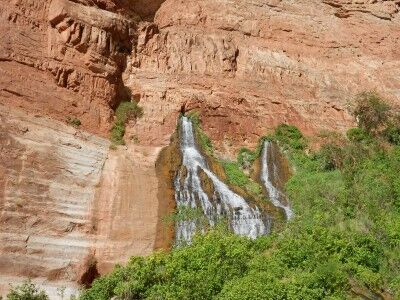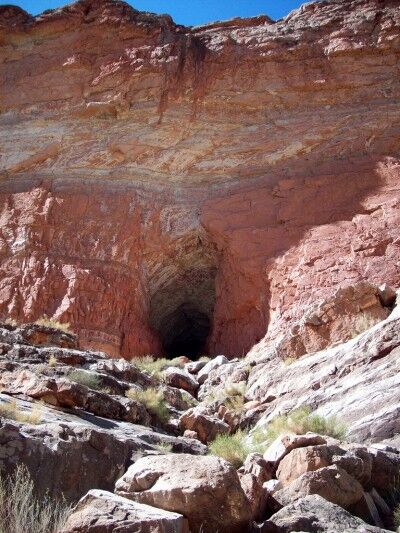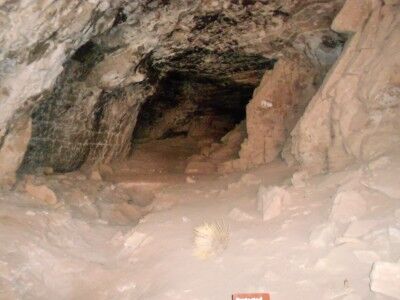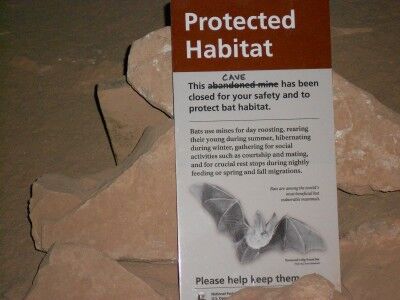While it’s possible to hike to Vasey’s Paradise (also called Vaseys Paradise) from Stanton’s cave (only about 1/4 of a mile further away), I chose not to do so. There is thick vegetation at the bottom of Vasey’s Paradise includes the one area in Grand Canyon National Park where poison ivy is abundant, and getting poison ivy was not how I wanted to spend my grand canyon rafting trip. It’s also where the critically endangered Kanab Ambersnail lives.
Vasey’s Paradise is the first waterfall on the Colorado River rafting trip which flows year round (there are plenty of waterfalls along the river that are active during flash floods, but quickly dry up). Vasey’s Paradise was named after a botanist who travelled with Powell surveying the river in 1868. The waterfall gets its water from rain that seeps through the upper sandstone layers of the canyon until it hits harder rock where it gathers. It flows out from the upper cliff faces from two cave holes in the canyon wall.
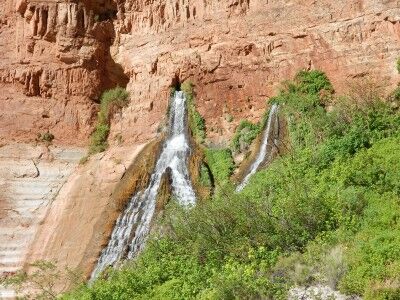
This is the first oasis that is seen from the river on the rafting trip, but for the aforementioned reason, isn’t a place where rafts usually stop to explore. It does make for a wonderful contrast to the desert environment as you float past it down the river.
